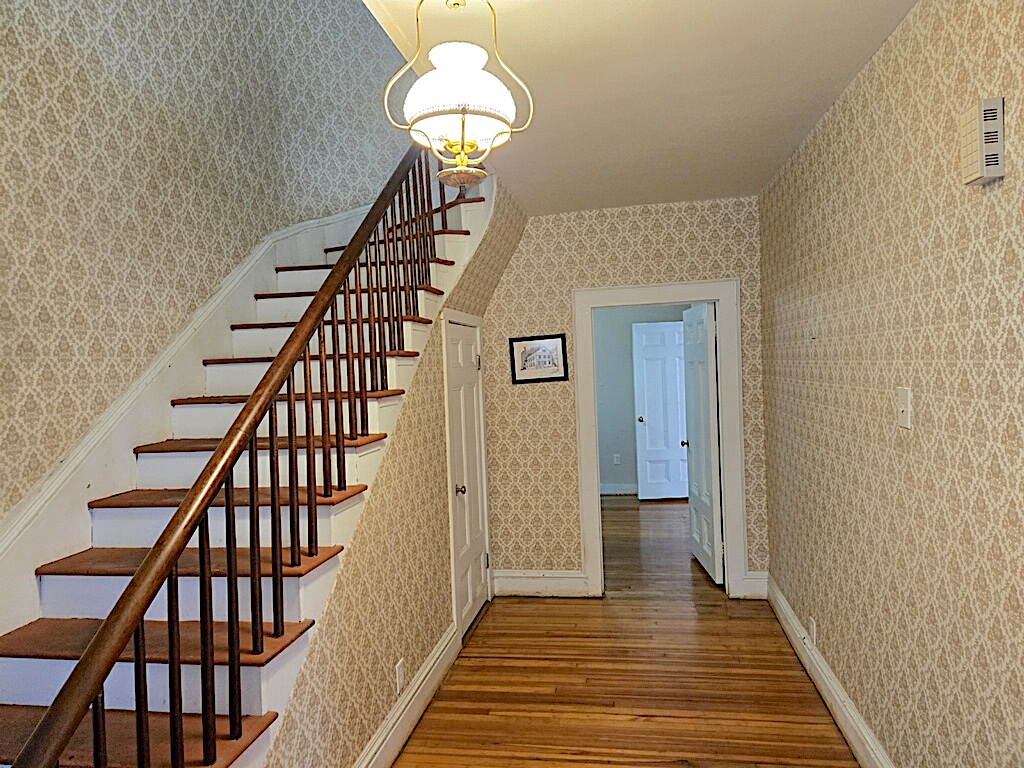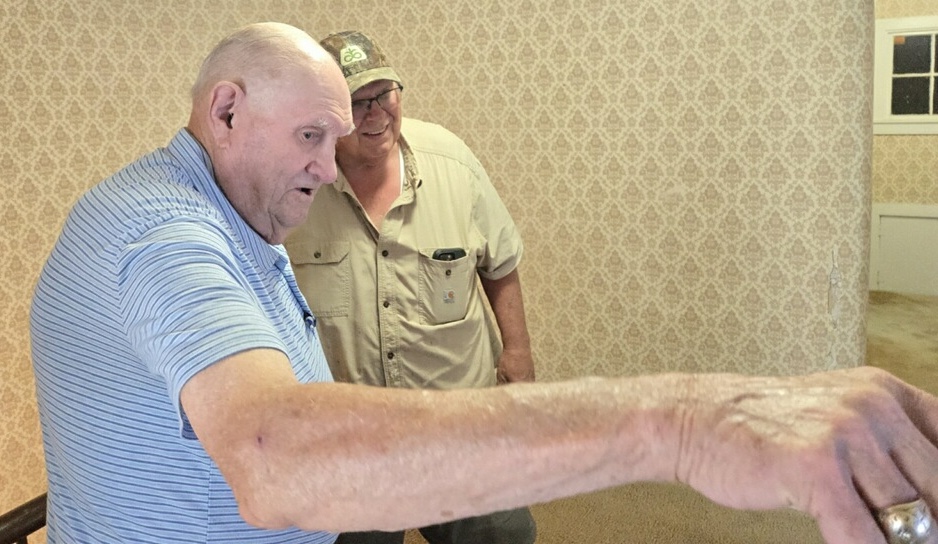Payson church selling ‘one of a kind’ home that once served as station on Underground Railroad

PAYSON, Ill. — A Payson house believed to have been a station on the Underground Railroad is available for purchase.
Realtor David Hawkins of Mays Realtors is selling the home at 102 N. Park, which was completed in 1840.
“It’s unique,” Hawkins said. “In a lot of ways, this is a one of a kind.”
The house has been available for sale since June 6 and is listed at $169,900.
Payson Congregational Church, located across the street, has owned the house since the early 1900s. Church moderator Chuck Fisher said the time was right to sell it.
“We’re never going to have a minister who will live here because we don’t have full-time ministers. We don’t have a big enough congregation,” Fisher said.
According to Deborah Schafer’s entry in “A History of Payson, Illinois 1835-1976,” Deacon Albigence Scarborough, who founded Payson in 1835, moved into the home — known as the Congressional Parsonage — in 1840. It then became Payson’s first church.
“Deacon Scarborough conducted the services in his home, reading sermons mostly written by Dr. Edward Payson, a Congregational minister in Portland, Maine, who was Deacon Scarborough’s idol,” Schafer wrote.





Evidence — most notably the chimney flues — also points to the home’s use as a station on the Underground Railroad.
“Stations on the Railroad had two chimneys on the south side. The parsonage has the unique feature,” Schafer wrote. “Mrs. Ruth Deters of Quincy reports that a letter outlining the Underground Railroad system in Adams County mentions a parsonage in Payson that was a principal station. She adds, ‘The Payson Congregational Church was founded in 1836, and it was a hub of underground activity.’”
The house also served as a day school taught by Elizabeth Scarborough. When “Lizzie” died in 1907, the house became a residence for retired ministers and/or missionaries.
“This plan proved to be unfeasible, and the trustees of the Scarborough estate — the late Henry Seymour and Henry Scarborough — affected an exchange of properties in Payson, and the Scarborough home became the church parsonage in 1912,” Schafer wrote.
The parsonage had fallen into disrepair by 1961, at which point the church voted in favor of restoring and repairing the home. The east end was removed and rebuilt, with renovation costs ranging between $17,000 and $18,000.
The home is still in livable condition. Hawkins said any updates to it will likely be cosmetic.
“Someone would probably want to replace the carpet in the three bedrooms, the wallpaper, minor fixes on the wall,” Hawkins said.
Fisher, who first learned of the home in the 60s, is amazed at the home’s longevity and the craftsmanship involved in constructing it.
“I get a big kick out of the way they built things in the past, you know, the wooden pegs and all those things,” Fisher said. “They knew what they were doing. They did it all off ladders. They didn’t have any power equipment. They climbed up the ladders and put up all that stuff up in the air, just manhandling it.”
Hawkins is equally impressed.
“When you got a 2×4, it was a 2×4,” Hawkins said. “It’s well-built. You had true craftsmen back then.”
Miss Clipping Out Stories to Save for Later?
Click the Purchase Story button below to order a print of this story. We will print it for you on matte photo paper to keep forever.

